Biotic and Abiotic Factors in Ecology
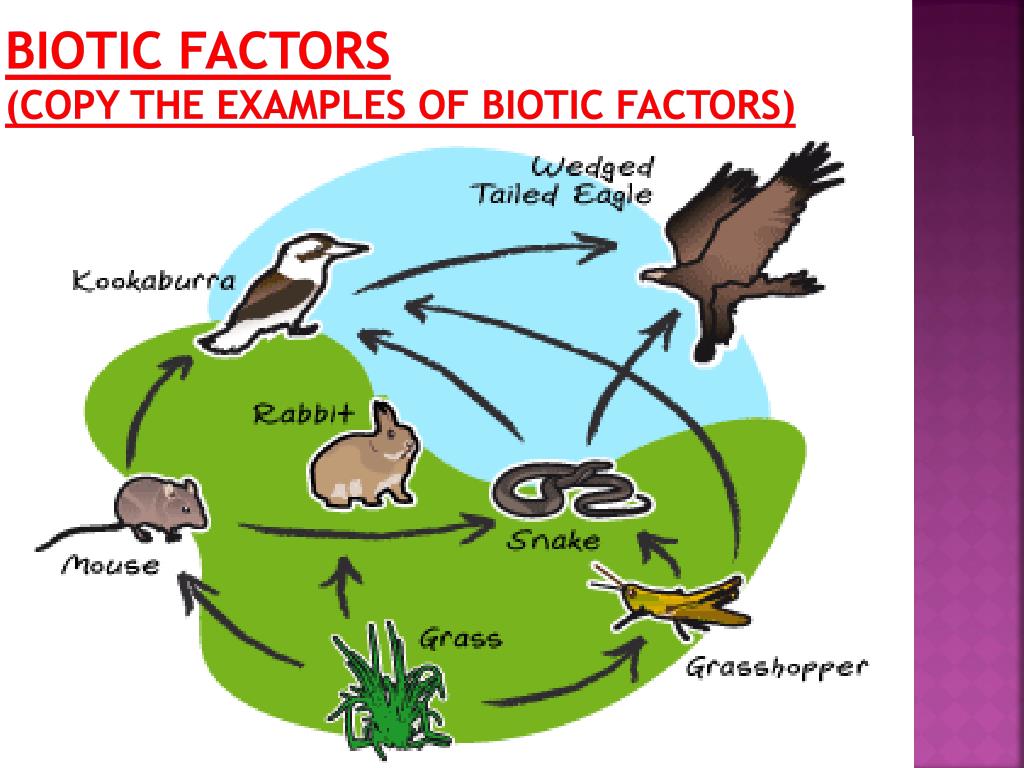
PPT Biotic Abiotic Tropism Limiting Factors PowerPoint Presentation ID2416187
Biotic Factors in Deserts ••• Updated July 16, 2018 By Kirsten Campbell The low rainfall and high rates of evaporation in desert landscapes combine to form a very dry, or arid, environment. Deserts receive the bulk of their annual rainfall during a single season, so desert biota must endure long drought periods.
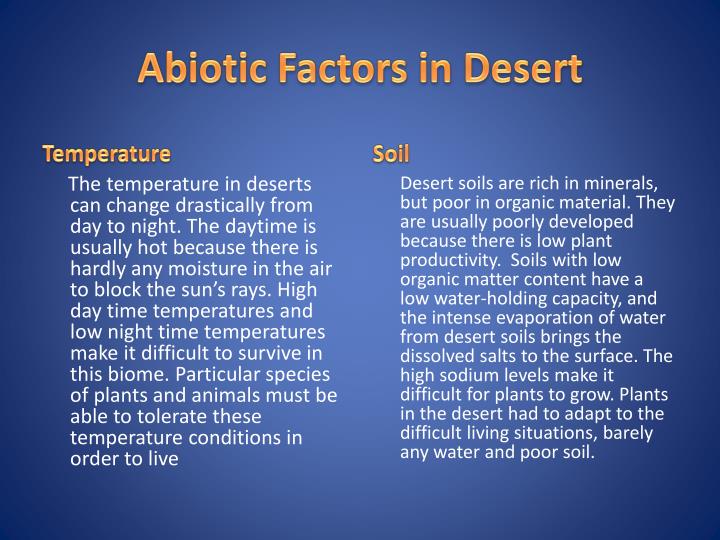
PPT Biomes Tropical , Savanna, Desert, and Chaparral PowerPoint Presentation ID5370057
Biotic Factors are the living parts of a biome that affect the organisms who live there. Plants, animals, and insects, are the biotic factors included in the desert. Human Effects on the Desert

PPT Desert ecosystem PowerPoint Presentation, free download ID1972083
A biotic factor is a living component that affects another organism or shapes the ecosystem. These can be animals, plants, fungi, and microorganisms. They relate to the living things in an ecosystem and are essential for the survival and growth of organisms within their environment.
🌷 What are two biotic factors. List of Biotic and Abiotic Factors in a Forest Ecosystem. 20221029
Biology Dictionary Subscribe to Our Newsletter A desert is a dry and barren ecological region that can be in either hot or cold climates. Examples of hot deserts are the Sahara Desert in Northern Africa and the Arabian Desert in the Middle East.

Biotic Factors in Deserts Sciencing
Series. Plant-animal interactions are as important in deserts as they are in any other ecosystem. Although it is likely that abiotic factors have greater influence in deserts than in other ecosystems, biotic factors are nonetheless very important. Desert plants and animals interact in ways that have strongly influenced their respective.
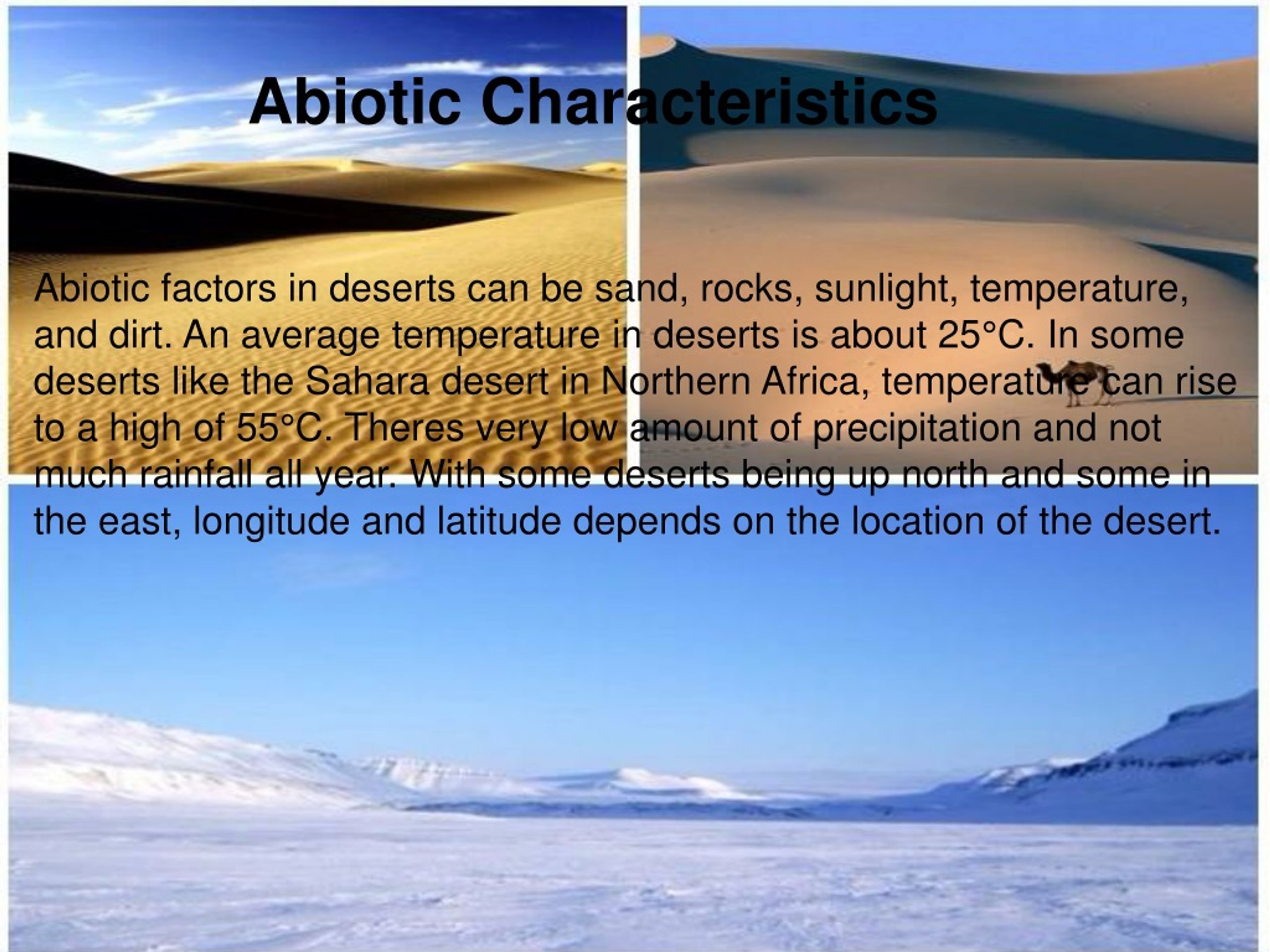
PPT The Desert Biome PowerPoint Presentation, free download ID1447231
5 Biotic Factors in the Desert and Their Characteristics Discussed By C. E. Mebunii May, 2023 Table of contents Biotic factors in the desert are; producers, herbivores, carnivores, omnivores, detrivores and decomposers (where the last two are addressed as a singular factor).

PPT Desert PowerPoint Presentation, free download ID2636957
What are Biotic factors: Depending on the region: In the desert, only some animals survive the camel (which can lose three-quarters of its weight in water), kangaroo rat, sudo bowl mouse, scorpions, variety of snakes, lizards, hawks, roadrunners, spiders. As in wildlife, only some plants survive.
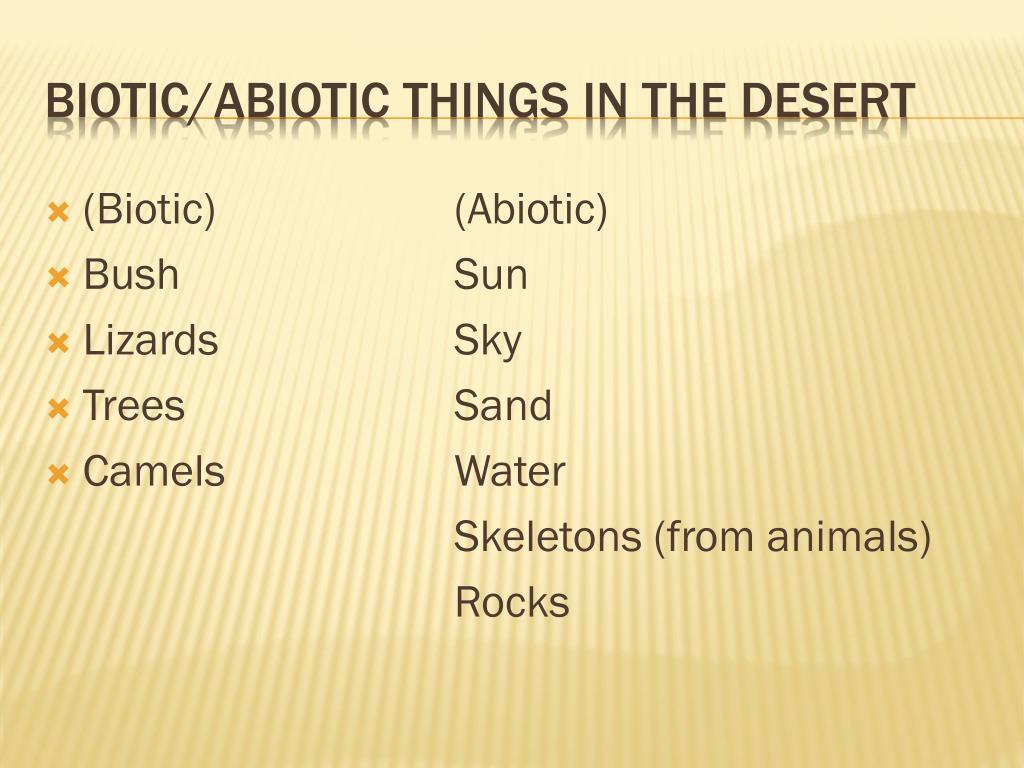
PPT Sahara Desert PowerPoint Presentation, free download ID5533708
1). Sahara Autotrophs (as one of the Biotic Factors in the Sahara Desert) Autotrophs in the Sahara Desert, like in any other terrestrial ecosystem, are very vital as biotic components. Autotrophs c an be described as organisms (such as plants ), that a re capable of produc ing their own food through the process of photosynthesis.
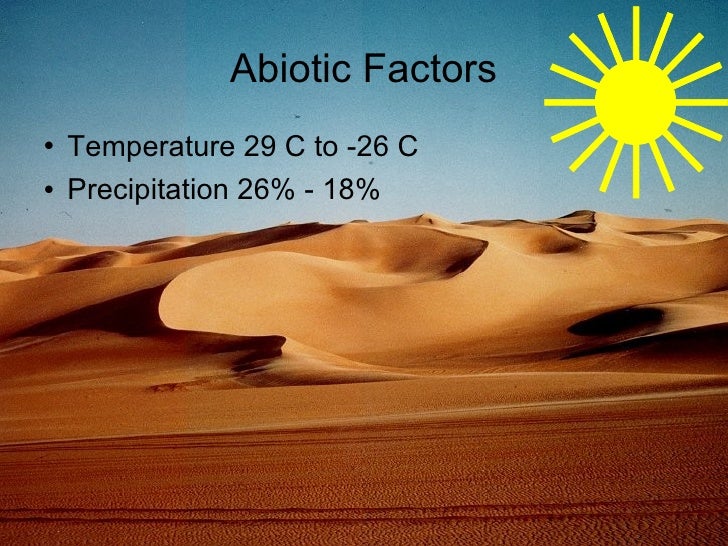
Sahara Desert Ecology Prjct
Desert ecology is the study of interactions between both biotic and abiotic components of desert environments. A desert ecosystem is defined by interactions between organisms, the climate in which they live, and any other non-living influences on the habitat.

Biotic And Abiotic Factors Of Desert Ecosystem
Two biotic factors in a desert are xerophytes (desert plants) and xerocoles (desert animals). Halophytes are also present, which show high tolerance to salty conditions. What are the.

Biotic and Abiotic Factors in Ecology
Desert ecosystem consists following abiotic factors: The desert ecosystem is characterized by high temperatures during the day and low temperatures at night due to the lack of vegetation to regulate temperature. The desert ecosystem has low precipitation levels, which can lead to water scarcity for both plants and animals.
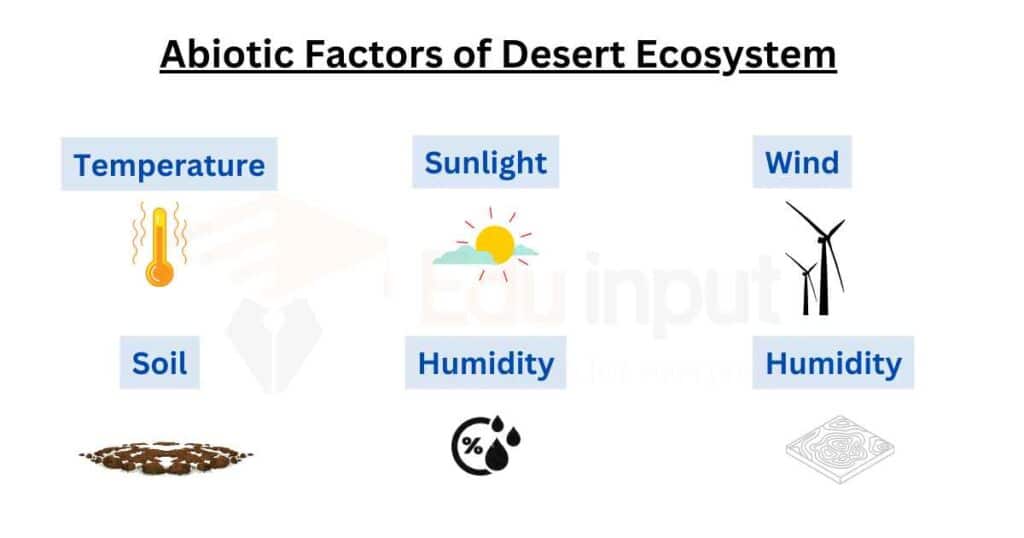
Biotic And Abiotic Factors Of Desert Ecosystem
The biotic factors of the desert are all the living beings that are part of it, such as fauna, flora and other organisms, as well as their interactions between the same species and between different species.
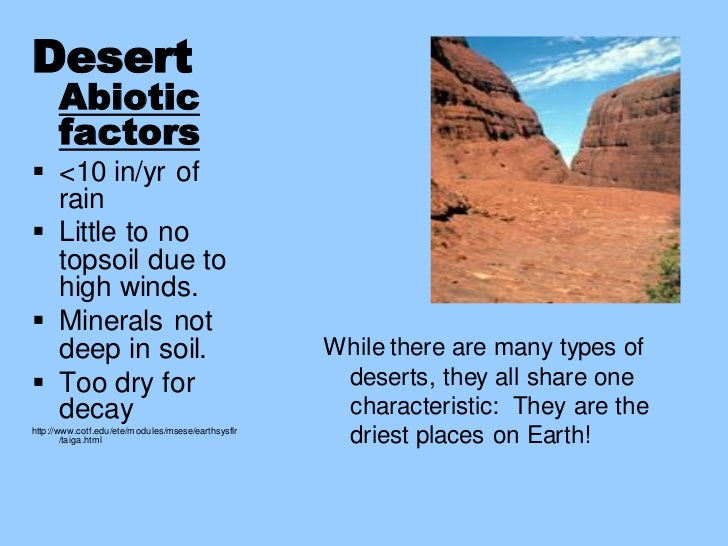
Biome presentation
There are a number of abiotic factors that have important impacts on the desert environment. Clearly, the most important of these is rainfall or, in some cases, other sources of precipitation such as fog, snow, or ice.

PPT Desert ecosystem PowerPoint Presentation, free download ID1972083
Factors falling under the abiotic components include climate, location, temperature, and precipitation. Let's take a close examination of each of these elements; Climate The climate of temperate deserts differs from that of subtropical deserts.

PPT The Desert Biome PowerPoint Presentation, free download ID1599127
Desert Mammals ••• Desert mammals such as bears, bobcats, coyotes, kit foxes, mule deer, raccoons, rabbits, gophers and squirrels stay cool in the peak desert heat by hiding out in trees or digging burrows underground.
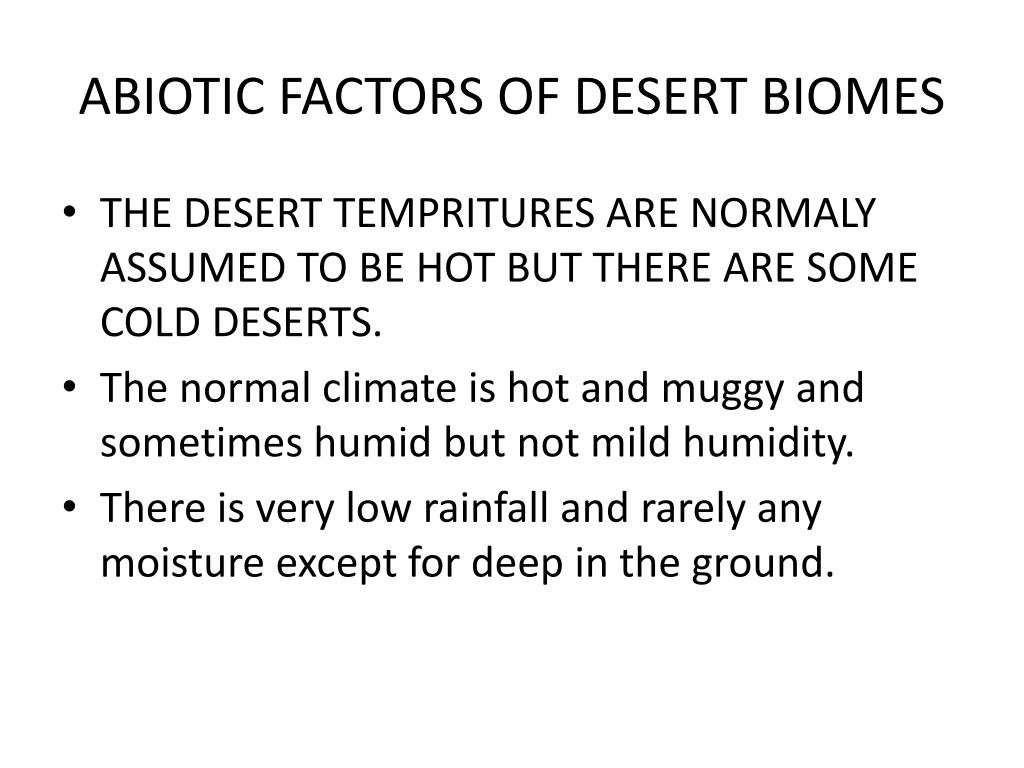
PPT DESERT BIOMES PowerPoint Presentation, free download ID2819244
1). Producers: One of the Mojave Desert Biotic Factors Producers are one of the fundamental biotic factors in the Mojave Desert ecosystem. These organisms c an be found at the bottom of the desert food web, and are instrumental in providing chemical bioenergy for the entire ecological community.